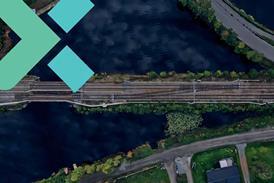Close menu
- Home
-
News
- Back to parent navigation item
- News
- Traction and rolling stock
- Passenger
- High speed
- Freight
- Infrastructure
- Policy
- Technology
- Ticketing
- Business
- Research, training and skills
- Accessibility and inclusion
- People
- Urban rail news
- Suburban and commuter rail
- Metro
- Light rail and tram
- Monorail and peoplemover
- Regions
- InnoTrans
- In depth
- Events
- Data
- Maps
- Tenders & Jobs
- Sponsored content
- Insights
Tilt no longer a novelty in Europe
By Railway Gazette International1997-04-01T10:00:00
INTRO: Roger Ford believes that body tilting has become a low risk bolt-on extra with provision for future retrofitting adding little to initial costsA CONFERENCE hosted by Britain’s Institution of Mechanical Engineers in January brought together presentations on all the European tilt technologies. While aimed at the renewed interest in ...
Already have an account? LOG IN
To continue…
You’ve reached your limit of content for the month














